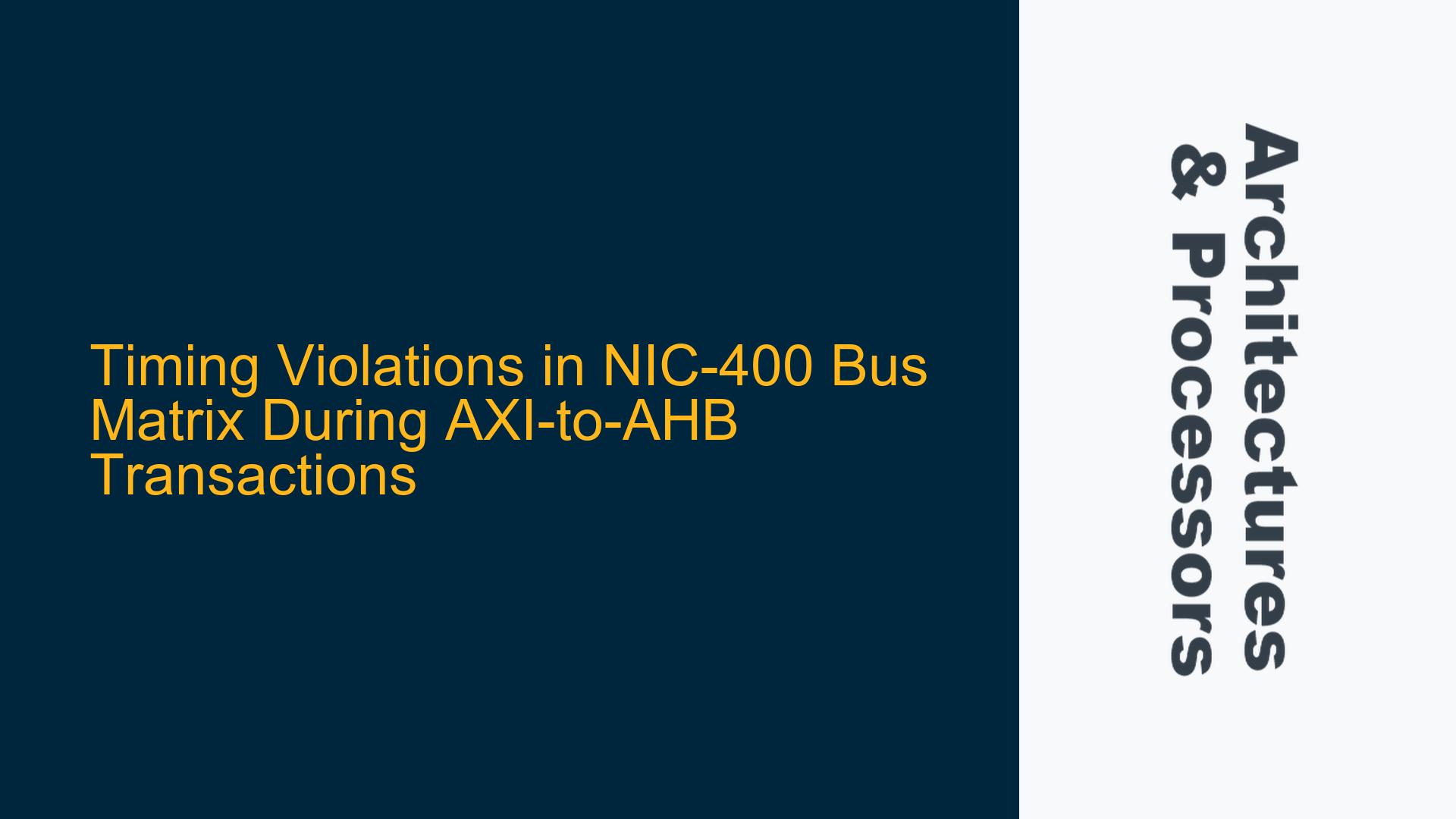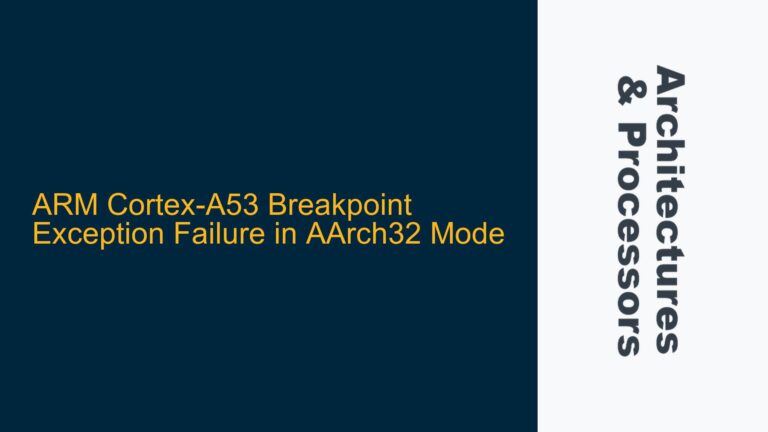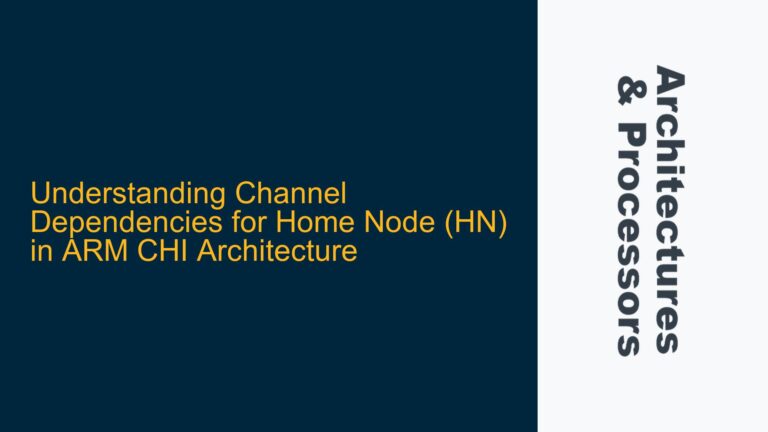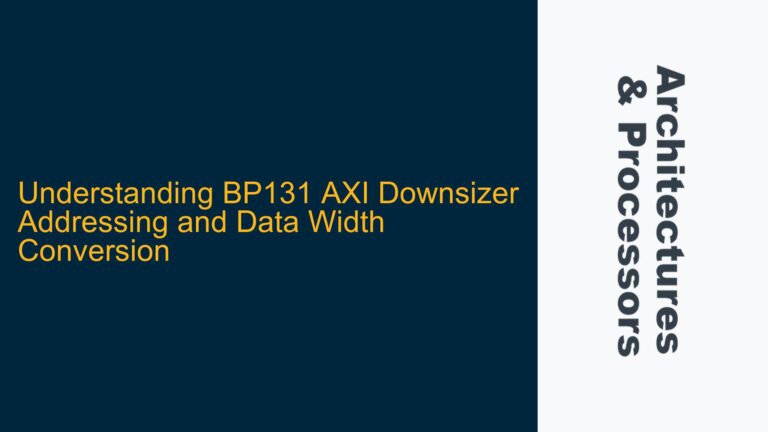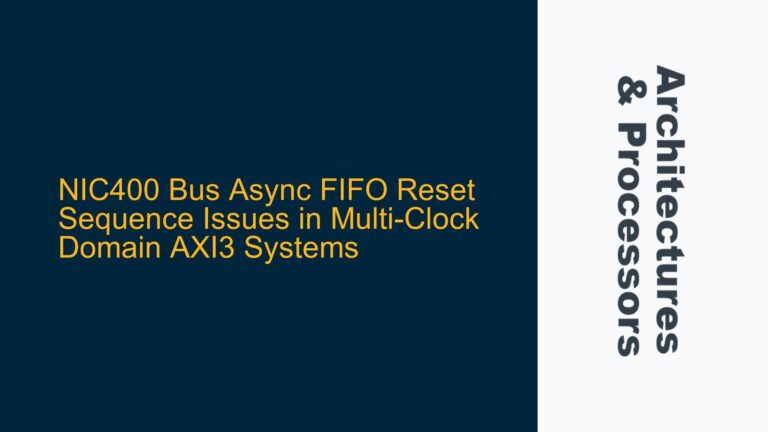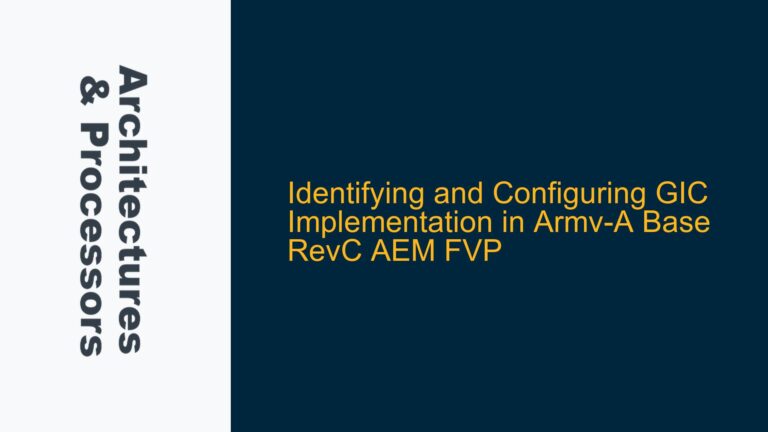Timing Violations in NIC-400 Bus Matrix During AXI-to-AHB Transactions
The NIC-400 bus matrix is a highly configurable interconnect fabric designed by ARM to facilitate communication between multiple masters and slaves in a system-on-chip (SoC). It supports various protocols, including AXI, AHB, and APB, and is widely used in ARM-based SoCs due to its flexibility and performance. However, one of the most common challenges faced by designers is timing violations, particularly when transferring addresses from an AXI slave to an AHB master through the bus matrix (BM). These violations often occur because the path between the AXI slave and AHB master lacks pipeline stages (DFFs), making the timing critical and difficult to meet.
In this scenario, the absence of pipeline registers in the address path between the AXI slave and AHB master results in a long combinatorial path. This path must propagate through the NIC-400 bus matrix, which can introduce significant delays due to the complexity of the interconnect logic. As a result, the setup and hold timing requirements at the AHB master interface may not be met, leading to timing violations. These violations can cause functional failures in the SoC, especially under worst-case conditions such as high temperature or low voltage.
The timing violations are exacerbated when the NIC-400 bus matrix is configured to handle multiple simultaneous transactions, as the arbitration logic and protocol conversion logic (AXI to AHB) add additional delays to the critical path. Furthermore, the timing constraints provided by the synthesis tool may not account for the worst-case propagation delays through the bus matrix, leading to optimistic timing closure during the synthesis phase. This discrepancy becomes apparent during post-layout timing analysis, where the actual routing delays and parasitic effects are considered.
To address these timing violations, it is essential to analyze the critical path in detail, identify the root causes of the delays, and implement appropriate fixes. One common approach is to insert pipeline registers in the critical path to break the long combinatorial chain and improve timing margins. However, this must be done carefully to avoid introducing additional latency or functional issues.
Long Combinatorial Paths and Lack of Pipeline Registers
The primary cause of timing violations in the NIC-400 bus matrix during AXI-to-AHB transactions is the presence of long combinatorial paths in the address transfer logic. These paths originate from the AXI slave interface, pass through the bus matrix, and terminate at the AHB master interface. The absence of pipeline registers (DFFs) in this path means that the entire address transfer logic must propagate within a single clock cycle, which is often not feasible given the complexity of the interconnect and the timing constraints of the target technology node.
The NIC-400 bus matrix performs several functions that contribute to the combinatorial delay. First, it decodes the address from the AXI slave to determine the appropriate AHB master. This decoding logic can be complex, especially in systems with a large number of masters and slaves. Second, the bus matrix performs protocol conversion from AXI to AHB, which involves translating AXI signals (such as AWADDR, ARADDR, and WDATA) into AHB signals (such as HADDR and HWDATA). This conversion logic adds additional gates to the critical path. Finally, the bus matrix arbitrates between multiple transactions, which further increases the combinatorial delay.
The lack of pipeline registers in the address path is often a design choice to minimize latency. However, this choice comes at the cost of increased timing pressure, especially in high-frequency designs or designs targeting advanced process nodes where wire delays dominate. In such cases, the combinatorial delay through the bus matrix can exceed the available clock period, leading to setup and hold violations.
Another contributing factor is the synthesis tool’s inability to accurately model the worst-case delays through the bus matrix. The synthesis tool relies on static timing analysis (STA) to estimate delays based on gate-level models and wireload models. However, these models may not capture the true worst-case delays, especially for complex interconnect logic like the NIC-400 bus matrix. As a result, the design may appear to meet timing during synthesis but fail during post-layout timing analysis when actual routing delays are considered.
Inserting Pipeline Registers and Optimizing Timing Constraints
To resolve timing violations in the NIC-400 bus matrix, the most effective approach is to insert pipeline registers in the critical path. This breaks the long combinatorial chain into smaller segments, each of which can be optimized to meet timing. However, inserting pipeline registers must be done carefully to avoid introducing functional issues or excessive latency.
The first step is to identify the critical path in the address transfer logic. This can be done using static timing analysis (STA) tools, which provide detailed reports on the worst-case paths and their delays. Once the critical path is identified, pipeline registers can be inserted at strategic points to reduce the combinatorial delay. For example, a pipeline register can be inserted after the address decoding logic and before the protocol conversion logic. This ensures that the decoding logic operates within one clock cycle, while the protocol conversion logic operates within the next clock cycle.
When inserting pipeline registers, it is important to consider the impact on latency. Each pipeline register adds one clock cycle of latency to the address transfer. In most cases, this additional latency is acceptable, as the NIC-400 bus matrix is designed to handle multiple outstanding transactions. However, in latency-sensitive applications, the number of pipeline stages should be minimized.
In addition to inserting pipeline registers, the timing constraints must be optimized to ensure that the synthesis tool accurately models the worst-case delays. This involves setting appropriate input and output delays for the AXI and AHB interfaces, as well as specifying false paths and multicycle paths where applicable. For example, if the address transfer logic spans multiple clock cycles, a multicycle path constraint should be applied to avoid over-constraining the design.
Another optimization technique is to use retiming, which involves moving pipeline registers across combinatorial logic to balance the delays in each stage. This can be done automatically using synthesis tools that support retiming. Retiming can help reduce the overall combinatorial delay without increasing latency.
Finally, it is important to validate the timing fixes using post-layout timing analysis. This ensures that the actual routing delays and parasitic effects are accounted for. If timing violations persist, additional pipeline stages may be required, or the design may need to be optimized further to reduce the combinatorial delay.
In conclusion, timing violations in the NIC-400 bus matrix during AXI-to-AHB transactions are primarily caused by long combinatorial paths and the lack of pipeline registers. These violations can be resolved by inserting pipeline registers, optimizing timing constraints, and validating the design using post-layout timing analysis. By following these steps, designers can ensure that the NIC-400 bus matrix meets timing requirements while maintaining functionality and performance.
